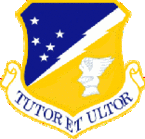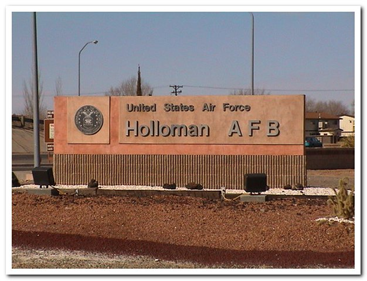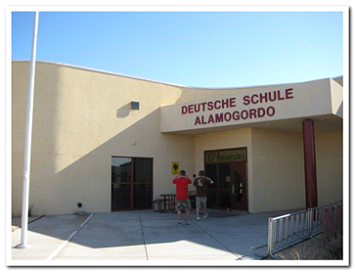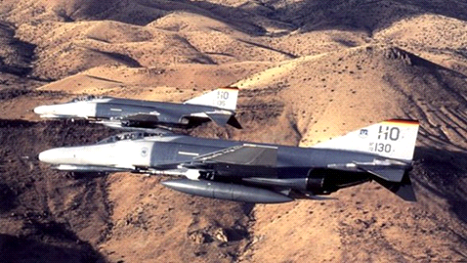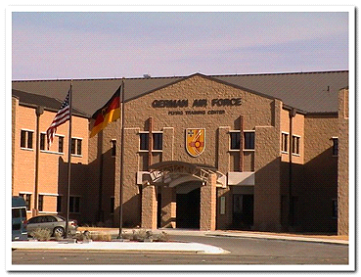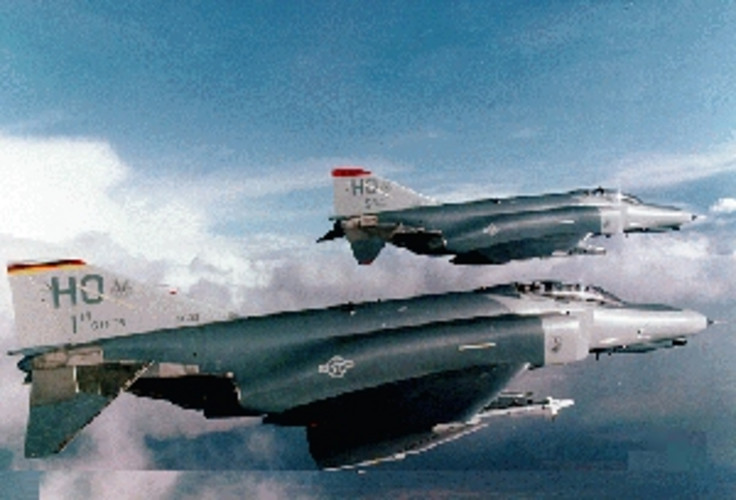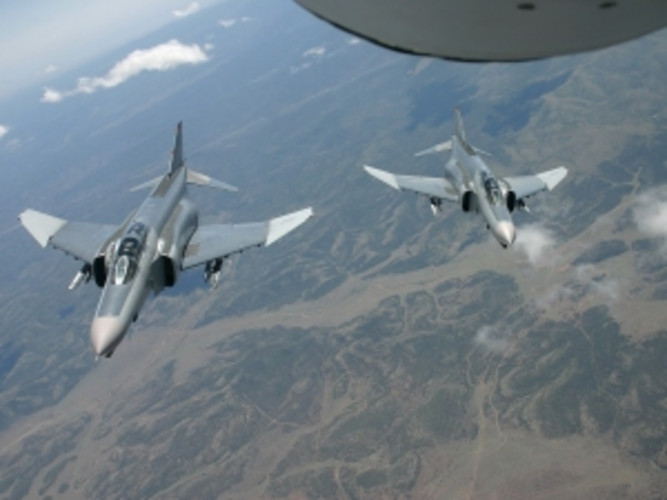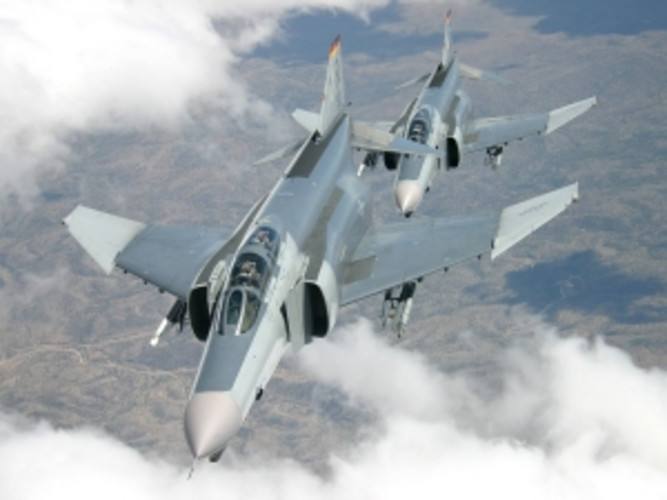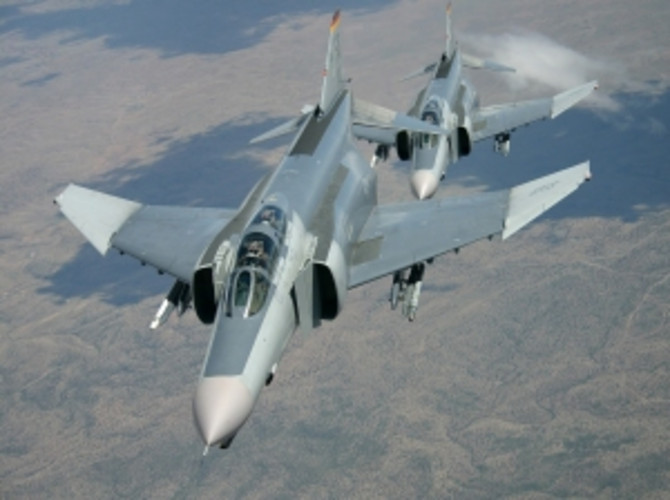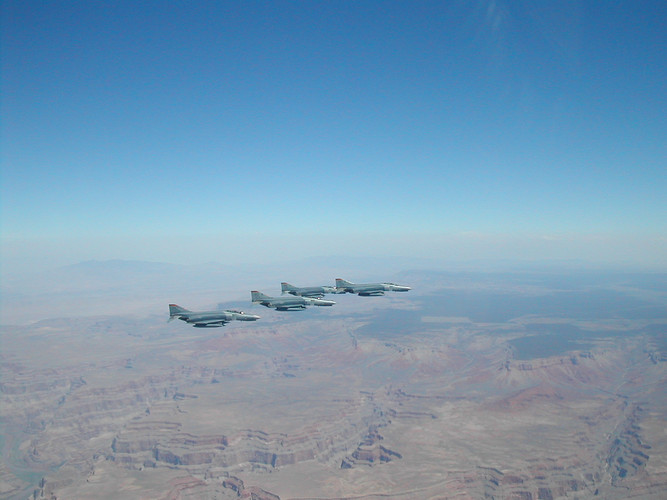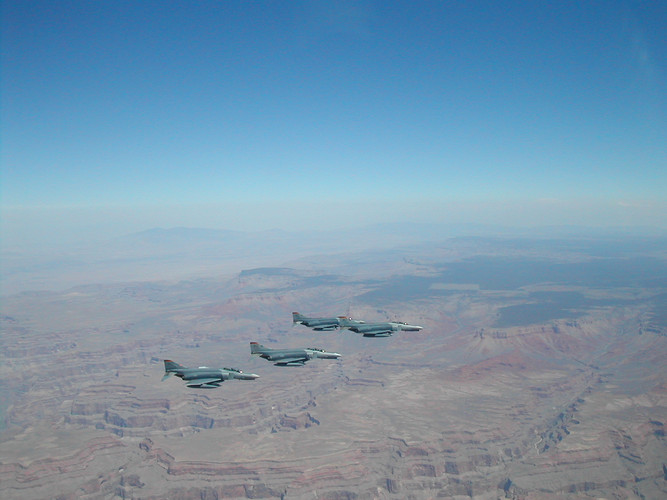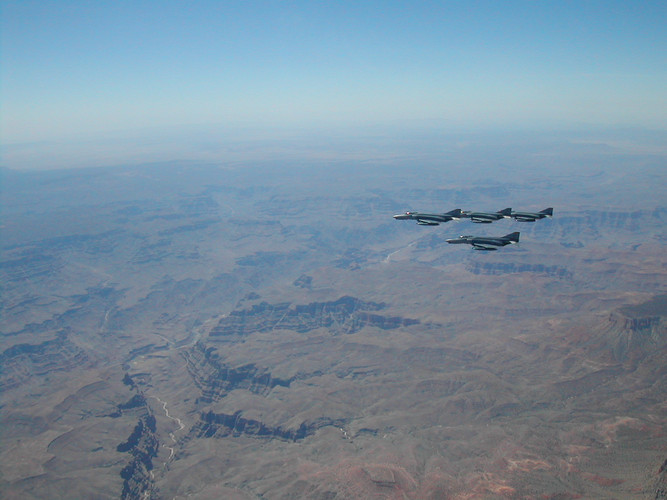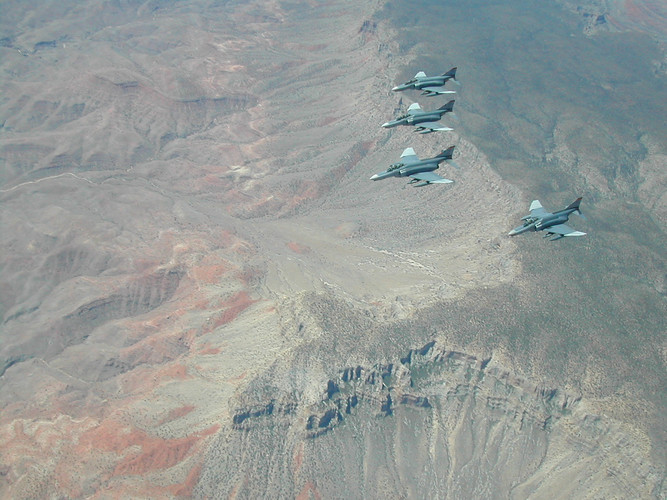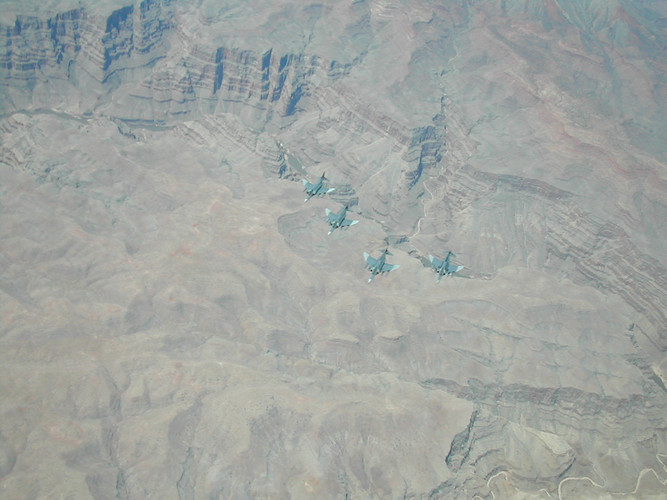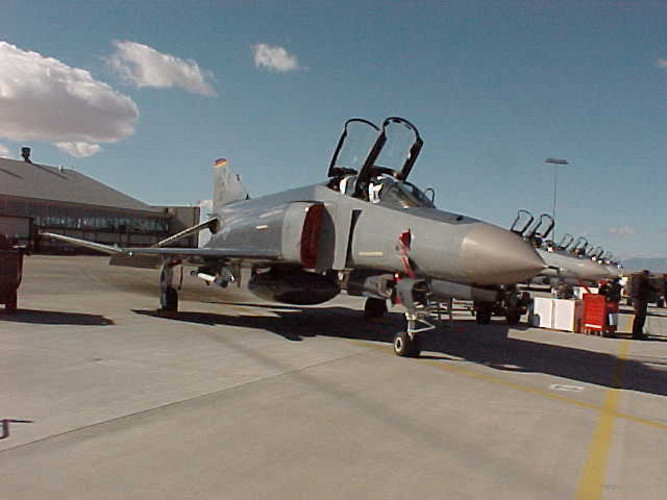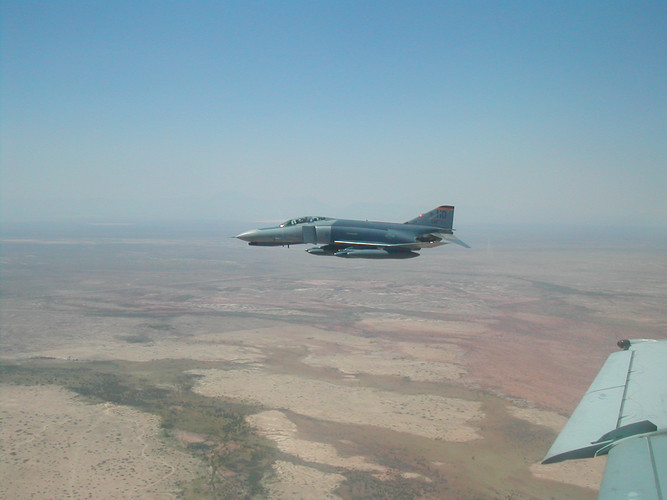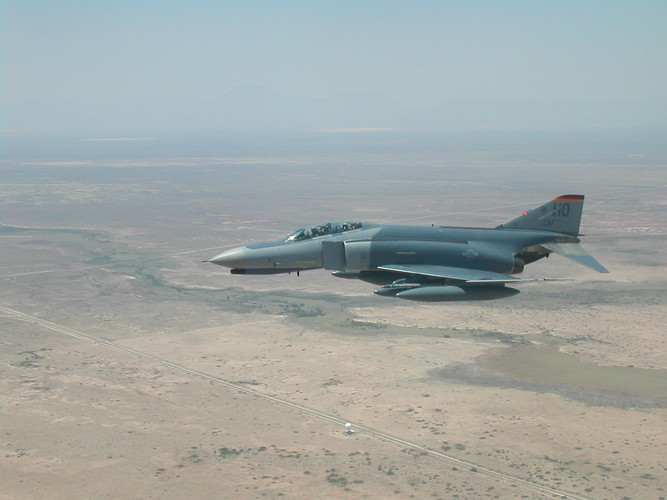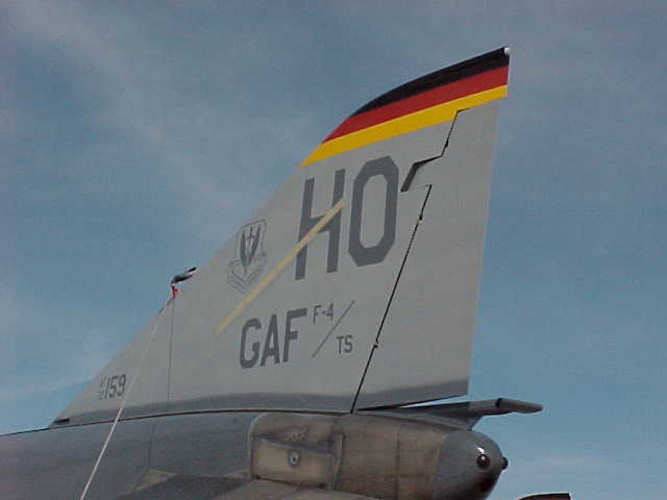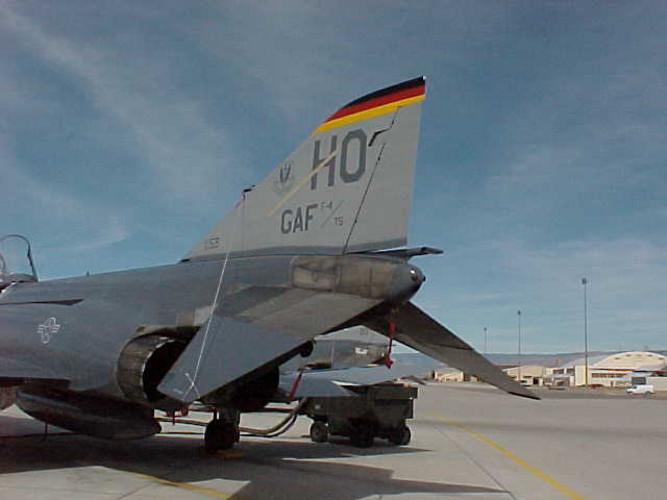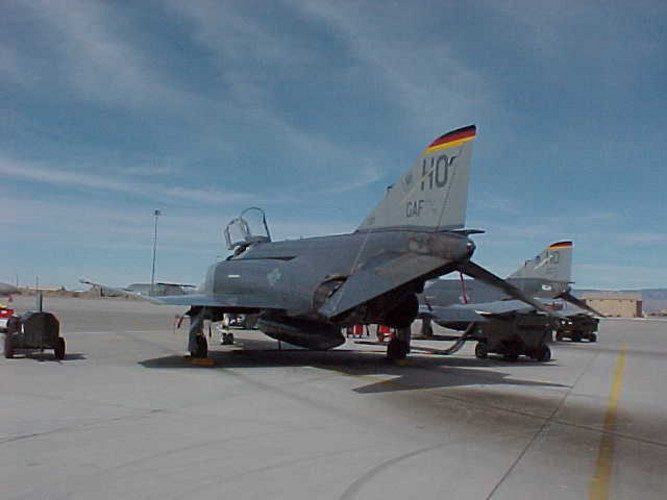Holloman AFB
Personal Memories
At the time of writing these words, five years have passed since German jets ceased flying at Holloman Air Force Base in 2018. Thinking back today to the times when German aircrews flew in New Mexico, it is obvious that this site was much more than 'just' the training facility for German Air Force (Luftwaffe) Phantom and Tornado crews.
The attractiveness of this location in the southwestern United States of America was unparalleled when compared to other German training facilities overseas. This was in part because the Luftwaffe invested heavily into the training of service members and well-being of their families.
For tens of thousands of soldiers and civilian employees and their families, their stay at Holloman AFB and the adjacent town of Alamogordo with it’s at the time 35 000 inhabitants has remained an unforgettable part of their lives.
Besides generous airspace and ranges for flying, the excellent infrastructure for training and accommodation as well as the establishment of a branch office of the German Armed Forces (Bundeswehr) administration agency on site and the possibility to enroll children in a school run according to German guidelines contributed to this. With the construction of the new school in 2000, an average of about 150 students per year were enrolled at the German school in Alamogordo until 2019.
The presence of both Protestant and Catholic military chaplaincies in Alamogordo was also particularly important for the German community. The construction of a new church in 2002, which both confessions shared, set an example for Alamogordo. Church services, weddings, baptisms, confirmations, and communions, to name but a few, were now possible within their own church and under their own direction. The many pastoral care measures will remain unforgotten as well.
Also, the offer of the Vocational Support Service was gratefully accepted, as were the services of the German Armed Forces Support Association, which, among other things, ensured the operation of the German Store.
For seventeen years a German Carnival Society, initially at the Elks Lodge and later at the Moose Lodge, thrilled the hearts and minds of the Carnival Fools in Alamogordo, and since 1996 every year an Oktoberfest with up to 6000 visitors was celebrated in the German hangar on the base.
Others fondly remember the 'winter combat training' at Red River or the Ski Apache Resort in Ruidoso, or the glory days of the German soccer team “The Sundowners”, which with its successes left a lasting impression in the region.
Last but not least, everyone had the opportunity to get to know the country and its people on long weekends and during the annual vacation period by traveling to attractions beyond the immediate vicinity - such as the Grand Canyon or the gambling city of Las Vegas - as well as to more distant parts of the United States.
While ideal conditions for flight training such as best climatic conditions, availability of training airspaces with short approach routes, the use of air-ground firing ranges as well as the option of air-to-air missions were the reasons to use Holloman AFB for German Air Force training, the overall environment was decisive for the well-being of German soldiers and civilian employees and their families. In addition to the factors already mentioned, the unconditional welcome extended to the German families by the locals and the professional cooperation between the US- and the German Air Forces also were of particular importance.
The training squadronsAfter George AFB in California was abandoned by the U.S. Air Force in 1992, flying training relocated to Holloman AFB and initially continued with the 9th Fighter Squadron. The aircraft inventory at that time consisted of seven Luftwaffe F-4Fs and seventeen USAF F-4Es. As a consequence of the 9th Fighter Squadron being tasked with conversion training for the F-117, the 20th Fighter Squadron “Silver Lobos” was reactivated on 01 July 1993 and again became responsible for the training of German F-4 crews, as it had been at George AFB before.
From 1997 on, the Luftwaffe F-4 Fs were redeployed to Germany, where they were ultimately retired. With the introduction of the Eurofighter into the German Air Force, regeneration training for F-4 F crews was gradually reduced and Luftwaffe F-4 F training eventually ended on Dec. 20, 2004, when the 20th Fighter Squadron was decommissioned. The remaining F-4 airframes at Holloman were shipped to the Maintenance and Regeneration Center (AMARC) at Davis Monthan AFB in Arizona. The 20th Fighter Squadron was the last USAF squadron which operated a manned version of the F-4 Phantom II. Thereafter, the USAF until 2016 used the Phantom only as an unmanned target drone under the designation QF-4. However, due to delays with the introduction of the Eurofighter, a small amount of F-4 F regeneration training for the German Air Force became necessary after all. This was conducted by the last Luftwaffe wing equipped with F-4Fs, Fighter Wing71 "Richthofen" at Wittmund Air Base.
In 1996, the first Tornado landed at Holloman AFB and since then, Tornado crews were also trained at the base. The Luftwaffe Flying Training Center Holloman was officially commissioned on March 31, 2000, with a total of up to 42 Tornado aircraft and a personnel strength of 840, producing up to 8500 flight hours per year. In almost 22 years, more than two thousand student aircrew were trained on the Tornado at Holloman. Tornado flight operations officially ceased on September 30, 2017. After that, Luftwaffe Tactical Air Force Wing 51 "Immelmann" at Jagel air base took over the responsibility of training aircrews for the dwindling Tornado fleet.
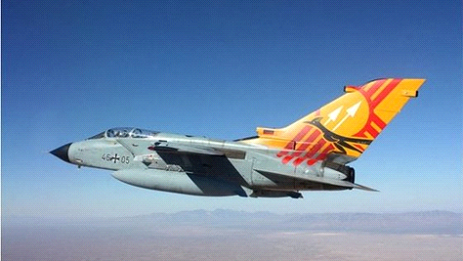
For more than 25 years, the German Air Force was represented at Holloman AFB with training flight operations for crew members of the F-4 F Phantom and Tornado weapon systems, altogether an unparalleled success story.
Holloman AFB
Holloman AFB has a long, storied and successful history.
At the time of World War II, bomber crews trained here before being deployed to their areas of operation. After the war, the airfield was mainly used for the development and testing of unmanned aircraft and guided missiles, as well as other research projects.
For example, on December 10, 1954, LtCol Stapp achieved a record speed of 1017 km/h (632 miles per hour) in a rocket-propelled sled. Later, other world rail vehicle speed records were set here.
On November 29, 1961, a chimpanzee 'Ham' bred and trained at the Aero-Medical Field Laboratory was launched into orbit.
Over the years, aircraft types flown here have included F-80 Shooting Star, F-84F Thunderstrike, EB-57 Canberra, F-100 Super Sabre, F-105D Thunderchief, F-104 Starfighter and T-38A.
Since 1968, Holloman AFB has been home to the 49th Tactical Fighter Wing, which relocated here from Spangdahlem AB with its F-4 D Phantoms, becoming the USAF's first ever 'dual based' squadron to now fulfill its NATO obligation from here. From May to October 1972, the squadron flew combat missions from Thailand as part of the Vietnam War, losing neither an aircraft nor personnel.
Beginning in December 1977, conversion from the F-4 D to the F-15 A/B weapon system began and was completed in June 1978. In February 1980, the squadron made history when two 'single-seat' F-15s covered 6200 miles in just over 14 hours while refueling six times in the air, setting a new record. The last F-15 left Holloman on 05 June 1992 after 14 years of service with this weapon system.
From 1991 to 1993, the 7th and 8th Fighter Squadrons retrained on the Lockheed F-117 Nighthawk, using the AT-38 B Talon as a trainer for this purpose. The 9th Fighter Squadron received German airpower at this time and continued training on the F-4 Phantom, which had been discontinued at George AFB. During Operation Iraqi Freedom, the F-117s flew more than 80 missions and played a critical role just at the beginning of that conflict. In 2006, it was decided that all F-117s would be withdrawn from Holloman and declared that flight operations on this weapon system would cease by 2008. Holloman was now to host a new stealth type, the F-22 Raptor air superiority fighter. From 2008 to 2014, F-22s were based at Holloman until they were finally moved to Tyndall AFB in early 2014.
At Holloman, the 56th Fighter Group was activated in 2014 and began F-16 Fighting Falcon training in April 2014, providing capacity for F-35 Lightning training at Luke AFB, Arizona.
Finally, it should be noted that in parallel to the aeronautical training at Holloman, the first Unmanned Aerial Vehicles (UAV) began their training operations in 2009 with the MQ-1 Predator and MQ-9 Reaper and have since become a permanent fixture in Holloman's training operations.
Whether the German Air Force will ever again fly jets from Holloman is written in the stars. A pity really.
Wolfgang Fahl
Translation by Jürgen Erbeck


